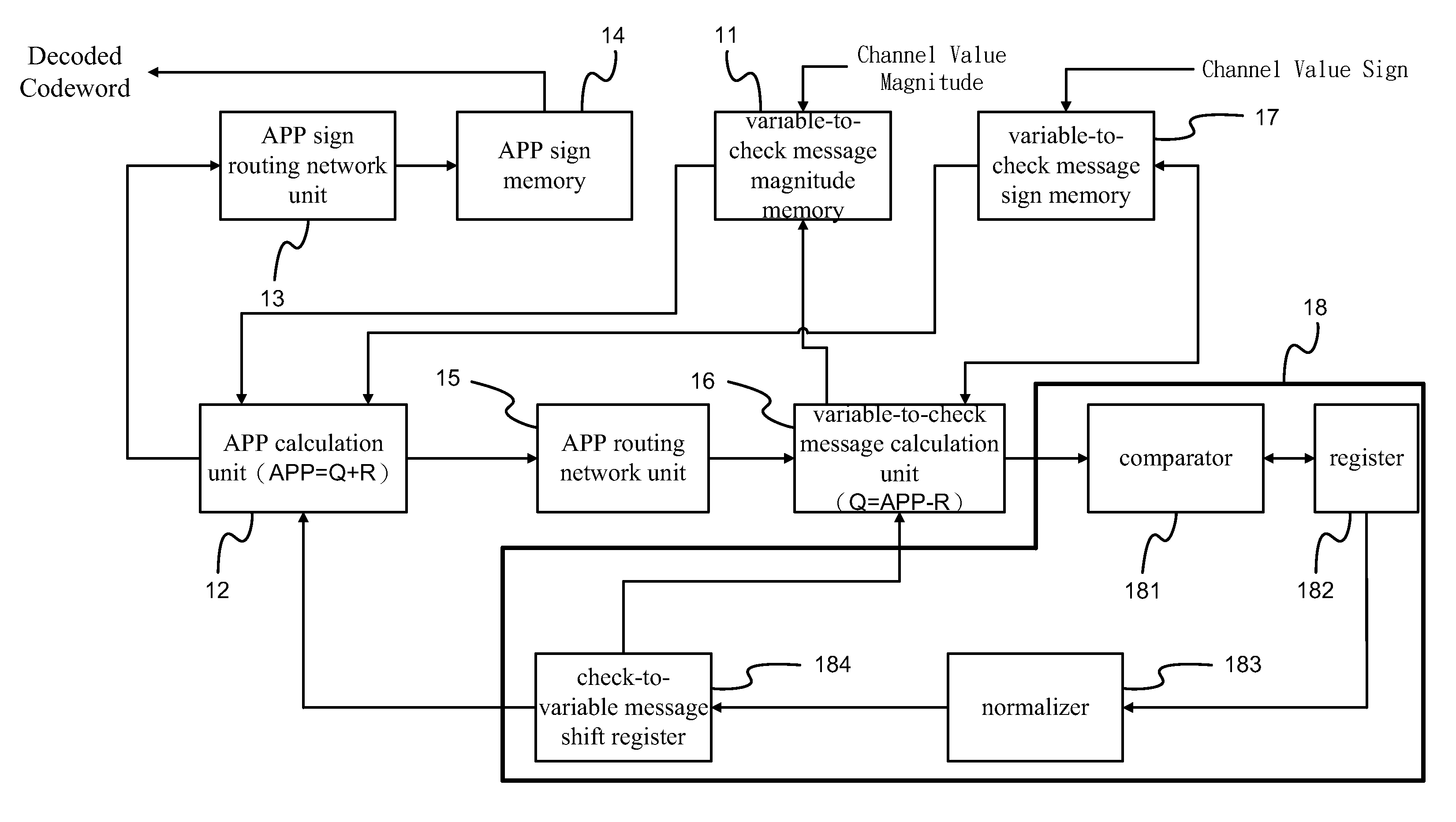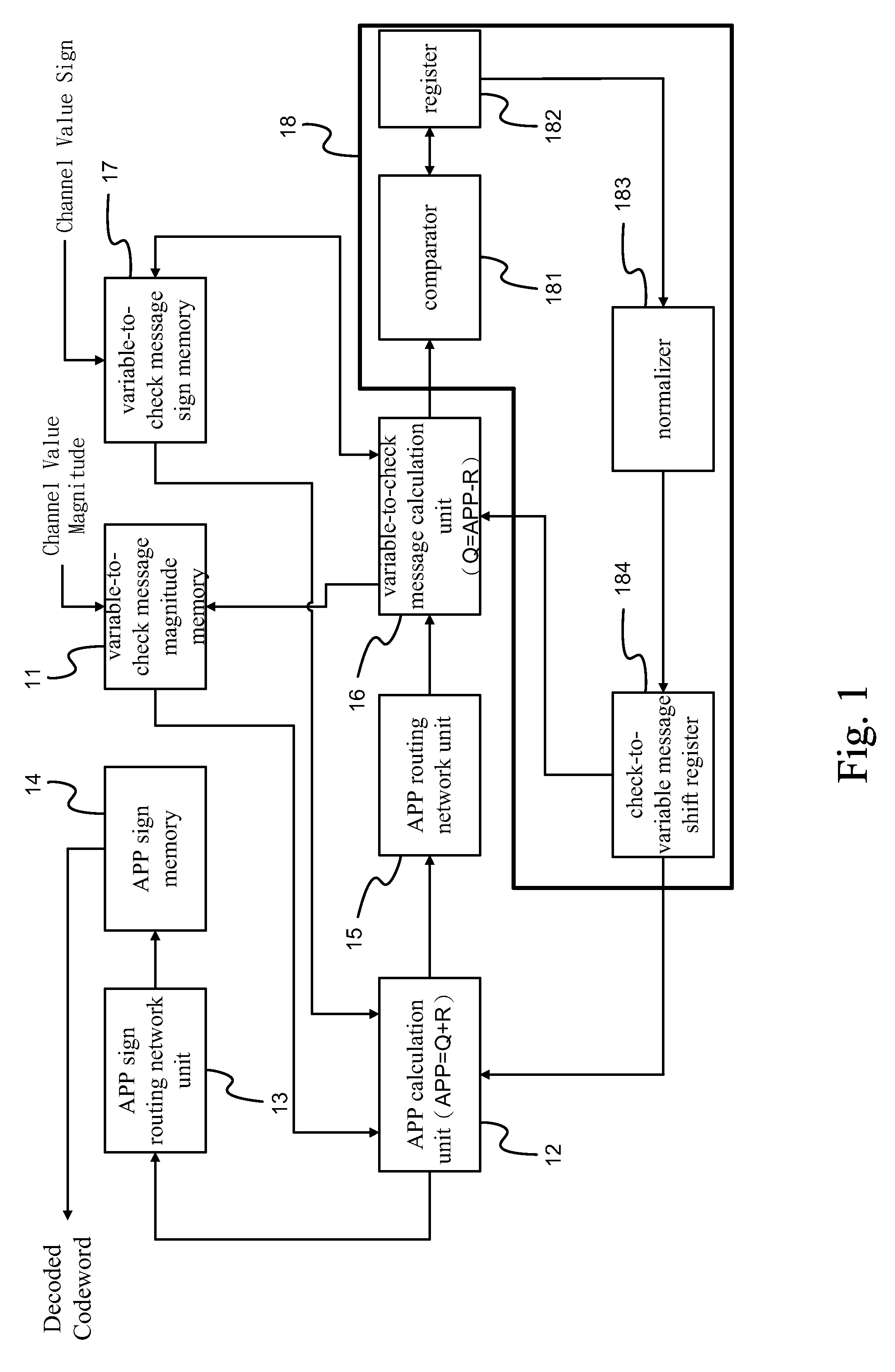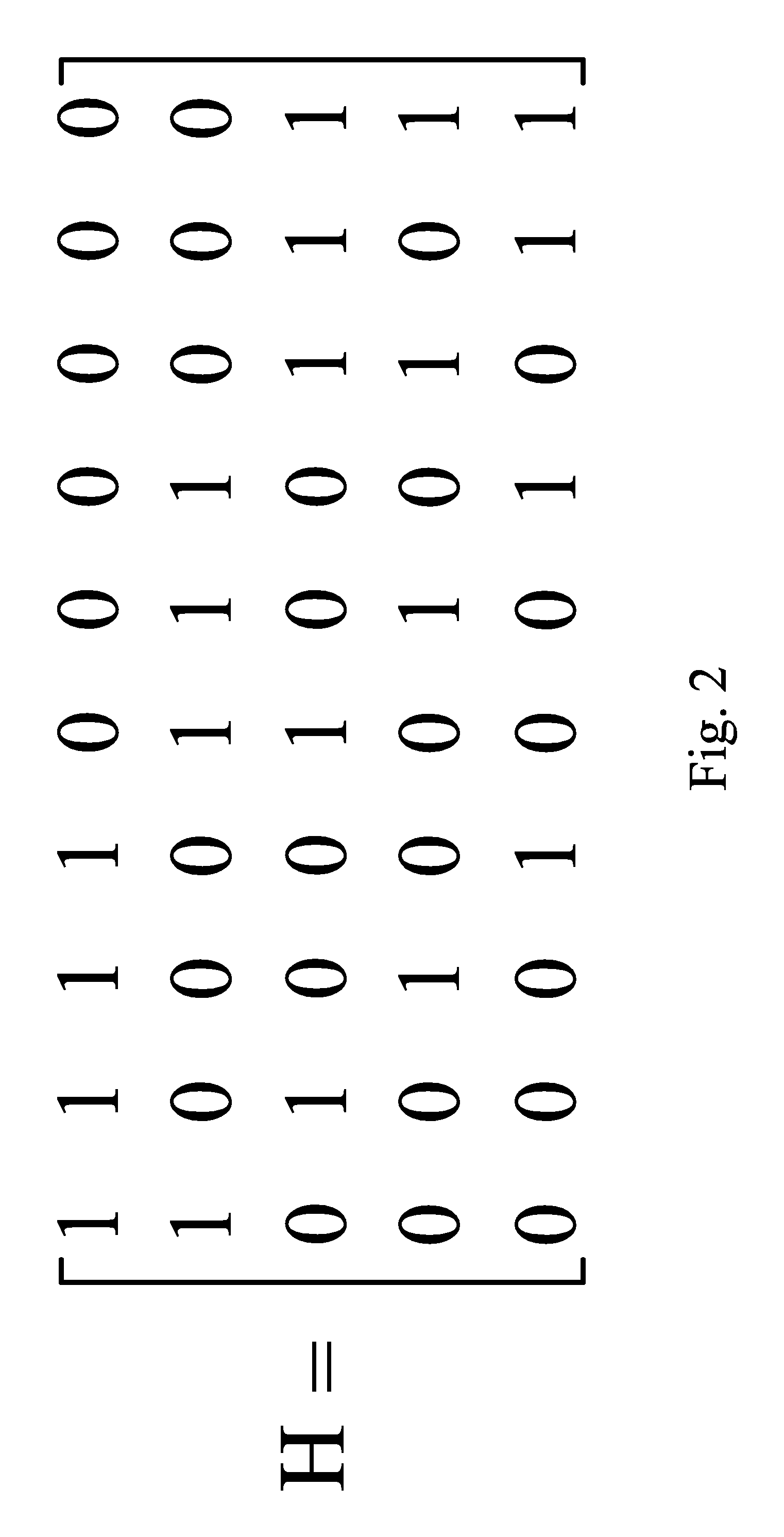Layered decoding architecture with reduced number of hardware buffers for LDPC codes
a decoding architecture and code technology, applied in the direction of code conversion, electrical equipment, code conversion, etc., can solve the problems of affecting hardware utilization, affecting hardware utilization, and the number of decoding components becoming idle, so as to achieve the effect of reducing hardware area and improving hardware utilization
- Summary
- Abstract
- Description
- Claims
- Application Information
AI Technical Summary
Benefits of technology
Problems solved by technology
Method used
Image
Examples
Embodiment Construction
[0033]The aforementioned illustrations and following detailed descriptions are exemplary for the purpose of further explaining the scope of the present invention. Other objectives and advantages related to the present invention will be illustrated in the subsequent descriptions and appended tables.
[0034]Refer to FIG. 1, which is a schematic view of a layered decoding architecture with a reduced number of buffers based on the present invention. As shown, the layered decoding architecture with a reduced number of buffers at least includes a variable-to-check message magnitude memory 11, an APP calculation unit 12, an APP sign routing network unit 13, an APP sign memory 14, an APP routing network unit 15, a variable-to-check message calculation unit 16, a variable-to-check message sign memory 17, and a check-node processor 18.
[0035]The variable-to-check message magnitude memory 11 stores the obtained magnitudes of channel values as the initial variable-to-check message magnitudes or th...
PUM
 Login to View More
Login to View More Abstract
Description
Claims
Application Information
 Login to View More
Login to View More - R&D
- Intellectual Property
- Life Sciences
- Materials
- Tech Scout
- Unparalleled Data Quality
- Higher Quality Content
- 60% Fewer Hallucinations
Browse by: Latest US Patents, China's latest patents, Technical Efficacy Thesaurus, Application Domain, Technology Topic, Popular Technical Reports.
© 2025 PatSnap. All rights reserved.Legal|Privacy policy|Modern Slavery Act Transparency Statement|Sitemap|About US| Contact US: help@patsnap.com



